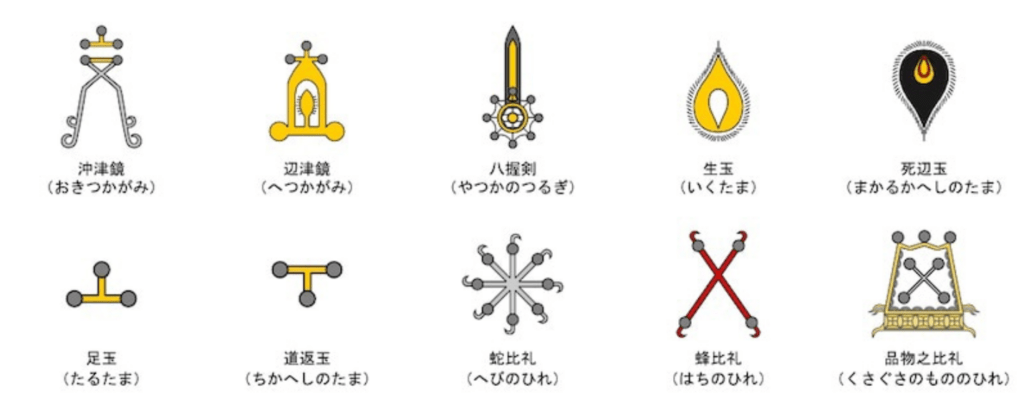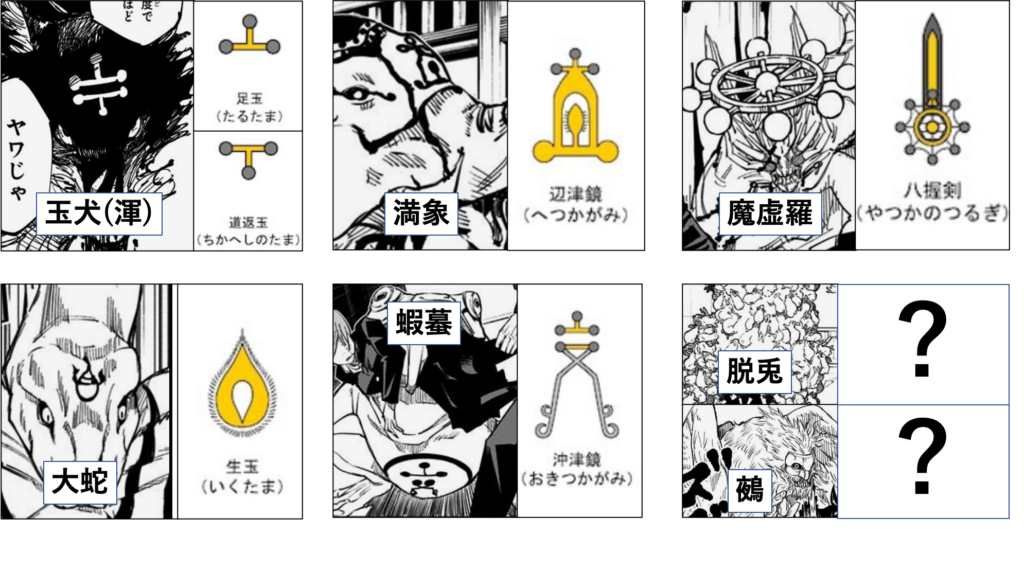Ten Shadows Technique is one of the strongest cursed techniques in Jujutsu Kaisen.
In this article, a native Japanese writer explained Ten Shadows Technique including the Japanese backgrounds.
What Is Ten Shadows Technique?
Ten Shadows Technique is a cursed technique passed down in the Zen’in family.
Sukuna praised the Ten Shadows Technique as “What a great cursed technique!” and the Jujutsu soecerer of Ten Shadows Technique killed the Jujutsu soecerer of Limitless with Six Eyes 400 years ago, which suggests Ten Shadows Technique is a fairly strong.
The following three effects of Ten Shadows Technique have been clarified.
Ten Shadows Technique
1, Summoning a shikigami that has been subdued in advance using the shadow as a medium.
2, Involving the opponent into the ritual to subdue the shikigami
3, Storing objects in shadows
Each effect is explained in detail below.
1, Summoning a Shikigami
The most standard way to use Ten Shadows Technique is to summon a shikigami that has already subdued.
At first, the user of Ten Shadows Technique has Divine Dogs.
And, the user of Ten Shadows Technique subdues new shikigami using the shikigami already subdued.
However, a completely destroyed shikigami cannot be summoned again, but the ability is inherited by other shikigami.
For example, the ability of the white dog which Finger Bearer has deatroyed was inherited by the black dog to become Divine Dog: Totality.
Fushiguro has subdued six types of shikigami: Divine Dog, Nue, Great Serpent, Rabbit Escape, Toad, and Max Elephant.
However, Sukuna completely destroyed Great Serpent, so Fushiguro can use five types of shikigami.
And, Fushiguro can use the expanded cursed technique that combines each shikigami.
Actually, Fushiguro summoned the Well’s Unknown Abyss which is a combination of Nue and Toad.
By the way, the shikigami summoned by the expanded cursed technique can be resummoned many times even if it was completely destroyed.
These are the most standard way to use Ten Shadows Technique.
2, Involving Opponents into the Ritual
Ten Shadows Technique can involve the opponent into the ritual to subdue a shikigami.
However, the subjugation must be completed all by oneself, so the ritual with other people is invalid.
Therefore, this usage is for summoning Eight-Handled Sword Divergent Sila Divine General Mahoraga, which any users of Ten Shadows Technique could not subdue, to kill the opponent and himself.

In fact, in the match of Zen’in family and Gojo family 400 years ago, the head of the Zen’in family, user of Ten Shadows Technique, summoned the Mahoraga in this way, and killed the head of the Gojo family, user of Limitless with Six Eyes.
However, Fushiguro relied on this trump card somewhere in his mind and was could not demonstrate his true ability, where Gojo said, “Winning by dying and winning even if you die… are two completely different things.”
3, Storing Objects inside Shadows
Ten Shadows Technique can store objects inside its shadow.
In addition, Fushiguro can hide inside the shadow, and this way was helpful to get close to Hakari.
Fushiguro stores cursed tools inside the shadow, and can take them out at anytime.
In addition, there is no oxygen and no buoyancy in the shadow.
Therefore, it is difficult to escape from the shadow without an appropriate cursed technique.
However, the user of Ten Shadow Technique has to bear the weight of the objects inside the shadow.
Therefore, very heavy items cannot be stored inside the sahdow.
The usage to drop the opponent inside the shadow is one-hit kill, so may be stronger than that to summon shikigami.
Motif Is Tokusanokandara
The motif of Ten Shadows Technique is Tokusanokandara.

Japanese meanings of Tokusanokandara (十種神宝) is below.
Tokusanokandara (十種神宝)
十:Ten
種:kinds, types
神:god, divine, sacred
宝:treasures
Tokusanokandara is the ten kinds of divine treasures that appear in a Japanese history books.
Its spiritual power is tremendous, which can control the rise and fall of nations.
Each Tokusanokandara is summarized below. (Quote)
・沖津鏡(Okitsukagami; Mirror of Offshore)
A mirror placed in a high place. It is also said to be the spirit of the sun. Rules are carved on the back, so to speak, a guidepost.
・辺津鏡(Hetsukagami; Mirror of Shore)
A mirror that you always have around. Judgment of vitality and evil by reflecting the face. Breathing and polishing leads to self-improvement.
・八握剣(Yatsukanoturugi; Eight-Handled Sword)
A divine sword for wishing for the peace of the nation. You can exorcise evil spirits.
・生玉(Ikutama; Ball of Living)
Hold this ball when entrusting your wishes to God or receiving God’s words. You can hear the word of God in my heart. A ball of light that unites gods and humans.
・足玉(Tarutama; Ball of Legs)
A ball that grants all wishes. This ball is placed in the left hand, and the eight-handed sword is held in the right hand, wishing for the prosperity of the nation.
・死返玉(Makarukaeshinotama; Ball of Revive)
A ball that can revive the dead. Place it on one’s left chest, place your hand over it, cast a spell, “由良由良 (Yura Yura)”.
・道返玉(Chikaeshinotama; Ball of Return)
Place it just above your navel and chant while holding your hand. Evil spirit sealing and evil spirit expulsion.
・蛇比礼(Hebinohire; Cloth of Snake)
Amulet cloth. Originally an apron to protect the lower half of the body from molten steel, it was a Shinto ritual of ancient ironmaking. Later, it became a sacred treasure to protect oneself from evil spirits crawling out of the ground. Also used when encountering a poisonous snake.
・蜂比礼(Hachinohire; Cloth of Bee)
Amulet cloth. Protect yourself from evil spirits from the sky by swinging and hiding yourself. Or, put it on top of evil spirits and unclean things to confine the demons.
・品々物之比礼(Kusaguramononohire; Cloth of Items)
If you put things here, the items will be cleansed. The deceased and the sick are put on this hire and put to sleep, and then they are resuscitated with 死返玉. It is also used to hide important items from monsters.
The corresponding relationship between each Tokusanokandara and shikigami is as follows.

Each shikigami is often engraved with the mark of Tokusanokandara.
However, no marks were found on the bodies of the Rabitt Escape and Nue, so it was not possible to determine which of Tokusanokandara they corresponded to.
Also, two kinds of Tokusanokandara, Tarutama and Chikaeshinotama, correspond to Divine Dog, so there may be shikigami that does not has corresponding Tokusanokandara.
In addition, the effect of Mahoraga’s Eight-Handled Sword corresponds to the effect of Tokusanokandara’s 八握剣.
In fact, Mahoraga’s Eight-Handled Sword specializes in anti-cursed spirits, and even Sukuna commented that if he was a cursed spirit, he would have been blown away with a single blow.
This exactly represents the effect of “exorcise evil spirits” in the explanation of 八握剣.
The effects of the other Tokusanokandara do not have much correspondence with the effects of shikigami of Ten Shadows Technique.
These are about the motif of Ten Shadows Technique.
Rest of Shikigami
There are seven types of Shikigami that have appeared so far: Divine Dog, Nue, Great Serpent, Toad, Max Elephant, Rabitt Escape, and Mahoraga.
So, the remaining three types of shikigami have yet to appear.
First, motifs of seven types of shikigami was summarized below.
Motif of seven types of shikigami
・Divine Dog: Dog
・Nue:Monster (monkey + tiger + raccoon dog + fox)
・Great Serpent:Snake
・Toad:Frog
・Max Elephant:Elephant
・Mahoraga:Guardian deity of Bhaisajyaguru (薬師如来)
Basically, motifs of shikigami are animals, but sometimes monster and gods.
Actually, the motif of Mahoraga is a guardian deity of Bhaisajyaguru (薬師如来) which the hand sign of Fushiguro’s Domain Expansion represents for.

It’s difficult because the motifs are scattered, but I’d like to make a prediction.
First of all, Mahoraga is a special shikigami because none of the successive generations of Ten Shadows Technique users have ever surrendered.
So, the rest of the shikigami would not have the same level of strength as Mahoraga.
Therefore, I assume that the motifs of the rest of the shikigami are either animals or monster.
Also, following the ratio so far, I assume 2 animals and 1 monster.
As for monster, the first that I come up with is Yamata no Orochi.
It is said that the motif of Eight-Handled Sword is Kusanagi no Tsurugi.
The anecdote that Kusanagi no Tsurugi has come from the tail of the Yamata no Orochi is very famous in Japan.
So, I expect the Yamata no Orochi is in the rest of the shikigami.
Also, I speculate that there may be a shikigami of a bee motif.
This is because Cloth of Snake and Cloth of Bee are in the Tokusanokandara.
Cloth of Snake would correspond to the shikigami Great Serpent, so the shikigami that corresponds to Cloth of Bee might be going to appear.
Another possibility is a cow-motif shikigami.
Many settings in Jujutsu Kaisen are based on myths and religions.
About the shikigami, dogs are enshrined at shrines as guardian dogs, and elephants are treated as gods in India.
Therefore, there might be a shikigami with a motif of a cow which is treated as the sacred in some religions.
In fact, Sukuna has many cow heads lying in his innate domain.
Based on the above considerations, I speculates that the rest of the shikigami are Yamata no Orochi, bee, and cow.
Postscript
This is the article about “Ten Shadows Technique Explained by a Native Japanese”.
Other articles explained the interesting and important issues in Jujutsu Kaisen.
Plese read them as well.
In addition, the Japanese version of this article is here.
